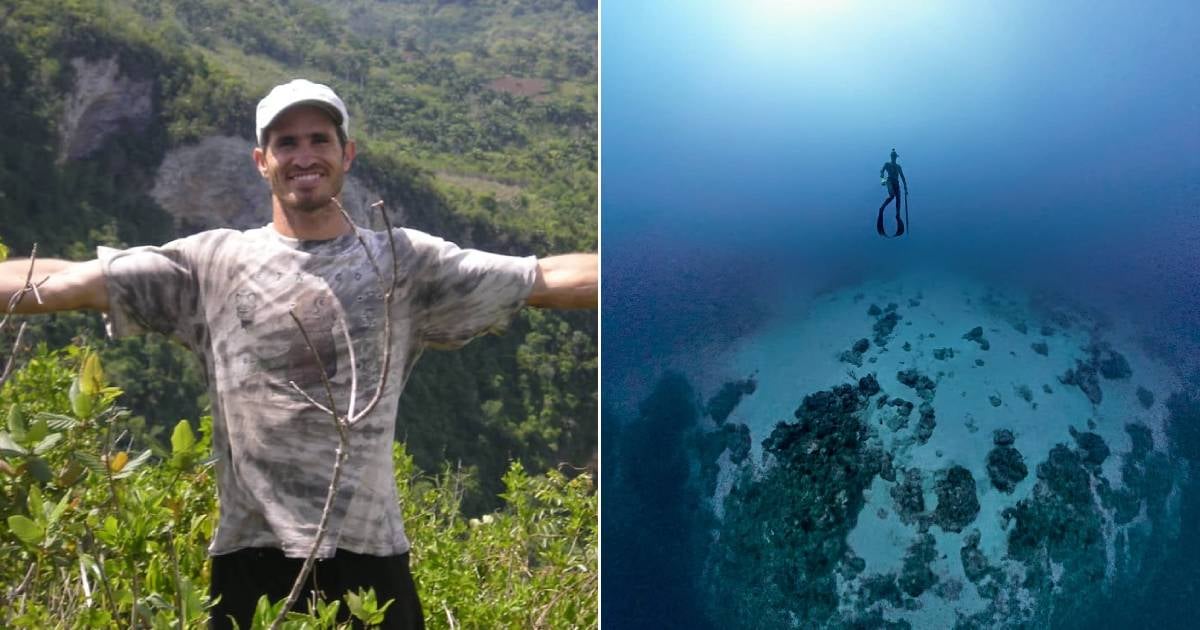Rafael Fernández, an advocate for responsible spearfishing in Cuba, passed away while engaging in this dangerous sport in the waters off Playa Baracoa. Journalist Michel Hernández dedicated an emotional Facebook post to Fernández, noting that he died while spearfishing alone. His body was discovered by a pair of fishermen on May 23, washed up on the shore of Playa Baracoa.
"He was 42 years old and died in a complete challenge. The same challenge with which he faced life and also death. The day before, someone saw him enter the sea, but no one saw him return. About 6 or 7 years ago, this young Cuban, a physics graduate from The University of Havana, who lived between Cuba and Canada, found his fulfillment in the sea, his intimate space of peace," Hernández, who was his friend and attended the funeral, recounted.
Hernández mentioned that Fernández would dive in apnea to depths of 30 or 35 meters, which is considered "a respectable distance," and that "Rafa," as his friends called him, defied one of the main rules of spearfishing: "Never go to the sea alone."
Hernández highlighted that Rafa was a lover of the underwater world and managed to show his friends the beauties of the sea, "not the simplicity of the reefs or the rough waves," but "a vastness they were unaware of." Rafa was known for being a responsible fisherman, not a predator, adhering to his principle of catching only one fish on each occasion.
"He had a principle. He wasn't one of those fishermen who went out with a predatory mindset. In the depths, he sought the right fish, and if he didn't find it, he would return empty-handed. For him, it was either that fish or nothing," Hernández said.
Fernández's family scattered his ashes in the sea of Playa Baracoa on May 27, in a ceremony attended by his friends. Underwater photographer Marcos Louit Ramos also paid tribute to Rafa with an image used in the first call for the Recreational Fishing Workshop by the Center for Fisheries Research (CIP). He urged his colleagues to respect the phrase with which they ended each class: "NEVER FISH ALONE." Ramos mentioned that the sea bonded them and their work to unite biologists and fishermen in projects promoting responsible fishing and marine ecosystem conservation.
In February, another Cuban, living on the Isle of Youth, also died while spearfishing in local waters, confirmed by his brother on social media. The young man, identified as Joaquín Carmona Vázquez, drowned after attempting to catch a Guasa grouper—also known as a giant grouper—that dragged him into a water hole, from which he could not resurface.
Key Questions About Spearfishing Safety and Risks
This section addresses some of the critical questions regarding spearfishing safety and risks, inspired by the tragic events involving Rafael Fernández and Joaquín Carmona Vázquez.
Why is it dangerous to spearfish alone?
Spearfishing alone is dangerous because there is no immediate help available in case of an emergency, such as entanglement, shallow water blackout, or equipment failure. Having a buddy can greatly increase safety by providing assistance if something goes wrong.
What safety measures can spearfishers take?
Spearfishers should always dive with a buddy, use proper equipment, stay within their physical limits, be aware of their surroundings, and have a clear plan for dealing with potential dangers. Regular training and adhering to best practices can also significantly enhance safety.
How deep is considered safe for spearfishing?
Safe depths for spearfishing vary depending on the individual's experience and training. Generally, for recreational divers, depths of up to 20 meters (around 65 feet) are considered safe, while more experienced divers might go deeper. However, it's crucial to recognize personal limits and not push beyond them.
What are the risks of diving to significant depths in apnea?
Diving to significant depths in apnea can lead to various risks such as shallow water blackout, decompression sickness, and hypoxia. The physical strain and pressure changes at deep depths require careful management and adequate training to mitigate these risks.
